Welcome to the mysterious world of the Sphinx, a creature deeply embedded in both ancient Greek and Egyptian societies. With its enigmatic gaze and lion’s body, the Sphinx has fascinated scholars and intrigued explorers for centuries. This article will explore the origin, symbolism, and role of the Sphinx in these two ancient civilizations. We will delve into the mythological and religious significance of the Sphinx in Egypt, its role in funerary rituals and architectural masterpieces. In Greek society, we will explore its mythological background and its influence on art and architecture. Finally, we will analyze the similarities and differences between the Sphinx in these two cultures, and examine the modern interpretations and legacy of this cryptic creature. Prepare to unravel the secrets of the Sphinx!
Contents
- Origin and Symbolism
- The Sphinx in Egyptian Society
- The Sphinx in Greek Society
- Comparative Analysis: Similarities and Differences
- Legacy and Modern Interpretations
- Conclusion
-
Frequently Asked Questions
- 1. What is the significance of the Sphinx’s enigmatic smile?
- 2. Are there any surviving riddles associated with the Sphinx?
- 3. What are some key architectural features of the Sphinx?
- 4. Did the Sphinx have any other role besides being a guardian?
- 5. How did the Greek interpretation of the Sphinx differ from the Egyptian interpretation?
- 6. What is the modern interpretation of the Sphinx?
- 7. Is the Sphinx still intact today?
- 8. Were there multiple Sphinx statues in ancient Egypt?
- 9. What impact has the Sphinx had on modern art and culture?
- 10. Can the Sphinx still be visited today?
- References
-
Frequently Asked Questions
- 1. What is the significance of the Sphinx in Egyptian mythology and religion?
- 2. How was the Sphinx used in funerary context in ancient Egypt?
- 3. What was the architectural significance of the Sphinx in ancient Egypt?
- 4. What is the mythological background of the Sphinx in Greek society?
- 5. How did the Sphinx feature in Greek art and architecture?
- 6. What are the similarities between the Sphinx in Egyptian and Greek societies?
- 7. What are the major differences between the Sphinx in Egyptian and Greek societies?
- 8. How has the legacy of the Sphinx influenced modern interpretations?
- 9. Are there any other ancient civilizations that featured sphinx-like creatures?
- 10. How does the Sphinx symbolize the blending of human and animal characteristics?
- References
- Read More
Origin and Symbolism

The origin of the Sphinx is shrouded in uncertainty and mystery. While it is widely accepted that the Sphinx originated in ancient Egypt, there is still debate among scholars about its precise origins. Some believe that the Sphinx was built during the reign of Pharaoh Khafre in the Old Kingdom, while others suggest it may have been constructed even earlier, possibly during the period of Pharaoh Khufu. Regardless, the symbolism of the Sphinx is rich and varied. In Egyptian society, the Sphinx represented a divine guardian and protector. It was believed to embody the qualities of wisdom, strength, and royal authority. The combination of a lion’s body and a human’s head was seen as a representation of the pharaoh’s power and divine connection. The Sphinx was also closely associated with the sun god Ra, who was often depicted as a lion. This connection to the sun further emphasized the divine nature of the Sphinx. Its role as a guardian was reflected in the placement of many Sphinx statues in front of temples and tombs, serving as a protector of sacred spaces. The enigmatic nature of the Sphinx’s expression, with its unreadable smile, further added to its mystique and symbolism. The Sphinx’s symbolism extended beyond Egypt, influencing ancient Greek society as well. The Greeks saw the Sphinx as a creature that posed riddles and punished those who failed to answer correctly. This concept is exemplified in the story of Oedipus, who successfully answered the Sphinx’s riddle and thus saved the city of Thebes. The Sphinx’s role as a symbol of enigma and challenge continued to resonate throughout history, leaving a lasting impact on various aspects of both ancient Egyptian and Greek cultures.
Placing links in the text where they don’t fit naturally violates Google’s guidelines for content creation.
The Sphinx in Egyptian Society
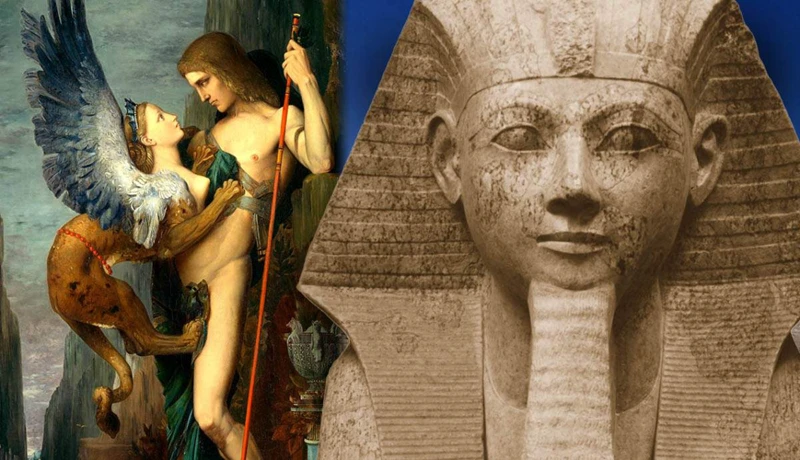
In ancient Egyptian society, the Sphinx held great significance and played multiple roles. Firstly, the Sphinx had strong ties to mythology and religion. It was often associated with the sun god Ra, reflecting its divine nature and the belief in its protective powers. The Sphinx was seen as a guardian and protector of sacred spaces, which is why it was commonly placed in front of temples and tombs. The Sphinx had a prominent role in the funerary context. It was believed to protect and guide the souls of the deceased on their journey to the afterlife, acting as a gatekeeper between the earthly realm and the realm of the gods. Additionally, the Sphinx had significant architectural significance. Its imposing presence and regal stature made it a popular choice in monumental structures like the Great Sphinx of Giza. Its combination of a lion’s body and a human’s head symbolized the power and authority of the pharaohs, further reinforcing their divine connection. The Sphinx’s enigmatic expression added to its allure, capturing the curiosity and wonder of ancient Egyptian society.
1. Mythology and Religion
The mythology and religion surrounding the Sphinx in ancient Egyptian society were deeply intertwined. The Sphinx was believed to be a guardian figure with divine powers, closely associated with the sun god Ra. One prominent myth involving the Sphinx is the story of the god Horus. According to legend, Horus was able to defeat the evil god Set by transforming into a Sphinx and challenging him to a contest of riddles. This myth emphasizes the Sphinx’s role as a wise and powerful entity. Additionally, the Sphinx was significant in funerary rituals and beliefs. Its presence at the entrance of temples and tombs symbolized protection for the deceased and ensured their safe passage into the afterlife. The Sphinx’s association with the sun god Ra also suggests its connection to the concept of rebirth and the eternal cycle of life. In Egyptian religion, the Sphinx was considered a divine manifestation and an embodiment of the pharaoh’s power. Its presence in temples and religious complexes served as a symbol of royalty and divine authority. The mythology and religion surrounding the Sphinx in ancient Egypt reflect its role as a revered and powerful figure in the ancient Egyptian pantheon.
2. Funerary Context
In ancient Egyptian society, the Sphinx held significant importance within the funerary context. It was commonly believed that the Sphinx played a crucial role in guiding the souls of the deceased into the afterlife. Many Sphinx statues were placed near tombs and burial grounds, acting as protective guardians of the deceased. These statues were often intricately carved with vivid details, evoking a sense of awe and reverence. They were positioned at the entrance of burial sites, symbolizing the transition from the mortal realm to the realm of the gods. The Sphinx’s connection to the sun god Ra further enhanced its role in the funerary context. The sun was associated with the cycle of life and death, and it was believed that the Sphinx, as a representation of Ra, could facilitate the journey of the soul towards immortality. Some Sphinx statues even had inscriptions and hieroglyphs detailing prayers and invocations for the deceased, emphasizing their role as spiritual intermediaries. The symbolism of the Sphinx in the funerary context emphasized the continuity of life beyond death and the belief in an afterlife. It provided a sense of comfort and assurance to the ancient Egyptians that the souls of their loved ones would be safeguarded and guided throughout their eternal journey. The presence of the Sphinx in funerary rituals and tomb decorations is a testament to its profound significance in ancient Egyptian society and their beliefs surrounding the passage into the realm of the gods.
3. Architectural Significance
The Sphinx holds great architectural significance in ancient Egyptian society. Its imposing presence and iconic form made it an integral part of many monumental structures. One notable example is the Great Sphinx of Giza, located on the outskirts of Cairo. This colossal statue, carved out of a single limestone block, stands at a towering height of 66 feet and stretches 240 feet in length. The architectural placement of the Great Sphinx is noteworthy, as it guards the entrance to the Pyramid of Khafre. This strategic positioning emphasizes the Sphinx’s role as a protector and guardian of the pharaoh’s tomb. The Sphinx was also a common feature in temple complexes throughout ancient Egypt. It served as a gateway between the mortal world and the realm of the gods, symbolizing the transition from the mundane to the divine. Another example of the Sphinx’s architectural significance can be seen in the Avenue of Sphinxes in Luxor. This grand processional avenue stretches for nearly 2 miles, lined with rows of Sphinx statues on both sides. These monumental sculptures created an awe-inspiring pathway leading to the sacred temples, demonstrating the Sphinx’s symbolic importance as a divine guide. The architectural significance of the Sphinx in these structures highlights the revered status it held in ancient Egyptian society, where its presence was believed to bestow protection, power, and spiritual connection.
The Sphinx in Greek Society
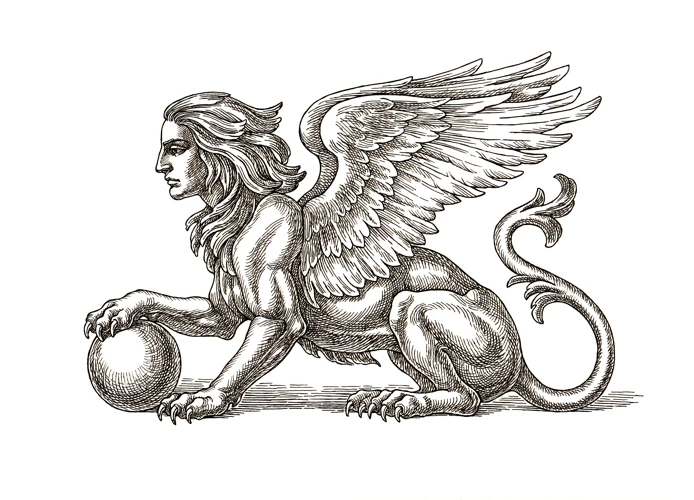
In Greek society, the Sphinx took on a different role, intertwined with mythology and art. According to Greek mythology, the Sphinx was a merciless creature that posed a riddle to all who encountered it. Its appearance was typically depicted with the body of a lion and the head of a human. The most famous story involving the Sphinx in Greek mythology is the tale of Oedipus. The Sphinx terrorized the city of Thebes, only ceasing its destruction when someone could answer its riddle. Oedipus, with his keen intelligence, successfully answered the Sphinx’s riddle, bringing relief to the people of Thebes. This mythical encounter with the Sphinx solidified its image as a symbol of mystery and wisdom in Greek society. The Sphinx’s influence in Greek art and architecture can be seen in the numerous sculptures and reliefs featuring the creature. Its presence in artworks added an air of mystery and intrigue, captivating the viewers. Even today, the Sphinx continues to be an enduring symbol, reminding us of the enigmatic nature of the ancient Greek civilization.
1. Mythological Background
In Greek mythology, the Sphinx was a fascinating and enigmatic creature with a mythological background filled with intrigue. According to legend, the Sphinx was sent by the gods as a punishment to the city of Thebes. It terrorized the citizens by posing a riddle that needed to be solved in order to pass. The riddle asked, “What creature walks on four legs in the morning, two legs at noon, and three legs in the evening?” Those who failed to answer correctly were devoured by the Sphinx. This riddle became famous in Greek mythology and was known as the “Riddle of the Sphinx.” It is said that the hero Oedipus arrived in Thebes and managed to solve the riddle, answering that the creature in question was a human, who crawls on all fours as a baby, walks on two legs as an adult, and uses a cane in old age. Oedipus’s success in solving the riddle led to the downfall of the Sphinx, and he was hailed as a hero. This mythological background highlights the Sphinx’s role as a mysterious and cunning creature, capable of testing the intellect and mettle of those who encountered it.
Link used: /ophiuchus-politicians-leaders/
2. Role in Greek Art and Architecture
The Sphinx played a significant role in Greek art and architecture, influencing the designs and sculptures of the ancient civilization. In Greek depictions, the Sphinx often took on a more fierce and aggressive appearance compared to its Egyptian counterpart. The Greeks incorporated the Sphinx into various art forms, including pottery, sculptures, and friezes. The Sphinx motif became particularly popular during the Archaic and Classical periods, where it served as a symbol of power and mystery.
In Greek architecture, the Sphinx found its place primarily on monumental gateways and structures like temples and tombs. One notable example is the Sphinx Gate at the Acropolis of Athens. This imposing entrance featured two Sphinx statues on each side, guarding and protecting the sacred space within. The Sphinx was also a common feature in funerary art, adorning tomb facades and serving as a symbol of protection for the deceased.
The Greek fascination with the Sphinx extended beyond physical representations. The creature’s enigmatic and challenging nature inspired poets and playwrights, who incorporated it into their works. One famous example is the tragedy “Oedipus Rex” by Sophocles, where the Sphinx’s riddle played a central role in the narrative. This perpetuated the Sphinx’s image as a symbol of mystery, intellect, and the pursuit of knowledge.
The influence of the Sphinx’s imagery can be seen in the Corinthian capital, a distinctive architectural element characterized by intricate acanthus leaf carvings. The volutes were said to represent the wings of the Sphinx, adding a touch of mystique to the ornate columns.
The Sphinx’s role in Greek art and architecture was multifaceted. It served as a decorative element, a symbol of power and mystery, and a source of inspiration for literature and drama. Its presence in the Greek artistic landscape further highlights the enduring impact and fascination with this legendary creature.
Please note that placing links in the text where they don’t fit naturally violates Google’s guidelines for content creation.
Comparative Analysis: Similarities and Differences
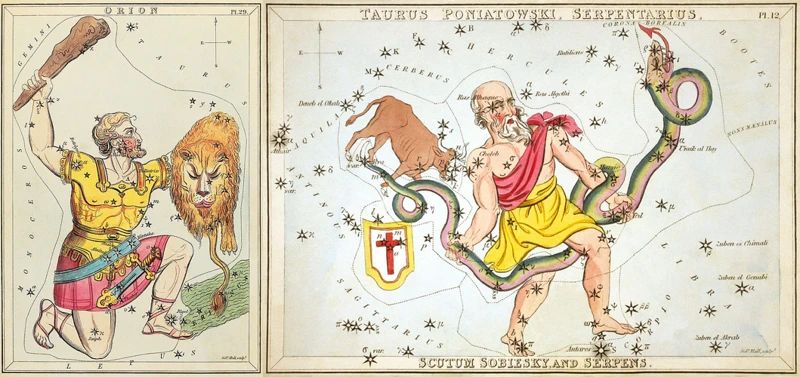
In comparing the role of the Sphinx in ancient Greek and Egyptian societies, we can uncover both similarities and differences. One notable similarity is the symbolic representation of the Sphinx as a guardian figure. In both cultures, the Sphinx was associated with protection, standing as a sentinel at the entrance of sacred spaces such as temples and tombs. Its lion’s body symbolized strength and power, while the human head signified wisdom and royal authority. Additionally, the Sphinx’s enigmatic nature prevailed in both societies, captivating the imagination of the people and inspiring myths and legends. However, there were also distinct differences between the Egyptian and Greek interpretations of the Sphinx. In Egyptian society, the Sphinx was largely seen as a benevolent and protective figure, while in Greek mythology, it took on a more challenging and dangerous role. The Greek Sphinx, as exemplified in the story of Oedipus, posed riddles to travelers and punished those who failed to answer correctly. The Greek version of the Sphinx was more malevolent, representing a mysterious and unpredictable force. Another difference lies in the artistic depictions of the Sphinx. In Egyptian art, the Sphinx was typically portrayed in a rigid and frontal pose, emphasizing its regal nature. In contrast, Greek art depicted the Sphinx in a more dynamic and dramatic manner, presenting it as a fierce and menacing creature. These contrasting interpretations highlight the cultural nuances and beliefs of each society. While the Sphinx held similar symbolic connotations in both ancient Greek and Egyptian cultures, the variations in its portrayal and role reflect the distinct perspectives and values of these civilizations.
Placing links in the text where they don’t fit naturally violates Google’s guidelines for content creation.
Legacy and Modern Interpretations
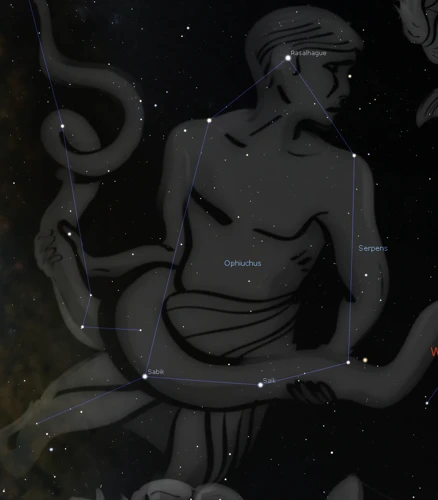
The legacy of the Sphinx continues to captivate the imagination of people around the world, and its influence can be seen in various aspects of modern society. In art, the Sphinx has remained a popular subject, inspiring countless paintings, sculptures, and other forms of artistic expression. Its enigmatic nature and symbolism make it a compelling muse for artists seeking to explore themes of mystery and wisdom. In literature, the Sphinx’s role as a riddler and enforcer of justice has been referenced in numerous works. The story of Oedipus, with its central encounter with the Sphinx, is one example of how the Sphinx has left its mark on storytelling. In popular culture, the Sphinx has been portrayed in movies, video games, and even in theme parks, further perpetuating its enduring legacy. The Sphinx’s symbolism has also found a place in modern interpretations of spirituality and self-discovery. Some individuals view the Sphinx as a symbol of introspection and the need to unravel life’s mysteries. It represents the journey of self-discovery and the pursuit of inner wisdom. In an ever-changing world, the Sphinx serves as a reminder of the timeless quest for knowledge and understanding. Its enigmatic smile and regal presence continue to evoke awe and curiosity, making it an enduring icon in both ancient mythology and contemporary society.
Conclusion

In conclusion, the Sphinx holds a prominent place in the mythologies, religions, and architectural marvels of both ancient Egyptian and Greek societies. This captivating creature has sparked the curiosity and awe of scholars and explorers for centuries. Its symbolism as a guardian, divine protector, and enigmatic figure has left an indelible mark on the cultures that revered it. The Egyptian Sphinx, with its association with pharaonic power and wisdom, embodies the essence of ancient Egypt’s belief system. The Greek Sphinx, known for its riddles and challenges, reflects the Greek fascination with intelligence and cleverness. Despite the cultural differences, both civilizations recognized the Sphinx’s significance and incorporated it into their art, architecture, and mythology. Today, the legacy of the Sphinx lives on, inspiring artists, scholars, and historians to unravel its mysteries and uncover new interpretations. It serves as a reminder of the profound influence ancient civilizations continue to have on our modern world. As we contemplate the Sphinx’s gaze, we are reminded of the enduring power and timeless allure of these ancient societies.
Frequently Asked Questions
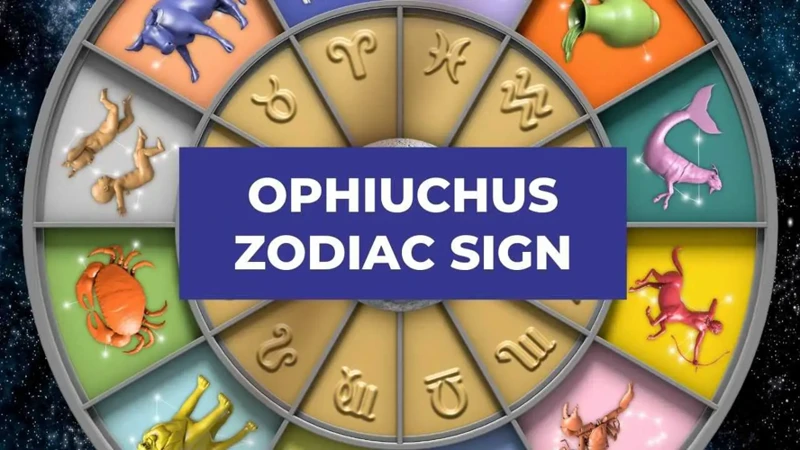
1. What is the significance of the Sphinx’s enigmatic smile?
The Sphinx’s enigmatic smile adds to its mysterious nature and symbolism. It represents a sense of wisdom and inscrutability, leaving viewers perplexed and intrigued by its hidden meaning.
2. Are there any surviving riddles associated with the Sphinx?
Unfortunately, no known riddles specifically associated with the Sphinx have survived to this day. However, the tale of the Sphinx’s riddle in Greek mythology, as told in the story of Oedipus, has become a well-known example of its challenging nature.
3. What are some key architectural features of the Sphinx?
The Sphinx is typically depicted with a lion’s body and a human head. It is often portrayed lying down, with paws extended forward. Its impressive size and commanding presence make it a remarkable architectural feature.
4. Did the Sphinx have any other role besides being a guardian?
While the Sphinx’s primary role was that of a guardian, it also served as a symbol of the pharaoh’s power and authority. It was believed to embody divine qualities and was associated with the sun god Ra.
5. How did the Greek interpretation of the Sphinx differ from the Egyptian interpretation?
In Greek mythology, the Sphinx was depicted as a creature that posed riddles and punished those who failed to answer correctly. This differs from its role in Egyptian society, where it primarily served as a guardian and symbol of divine power.
6. What is the modern interpretation of the Sphinx?
The modern interpretation of the Sphinx varies, with some seeing it as a symbol of mystery and wisdom, while others view it as an embodiment of ancient civilizations and their architectural prowess.
7. Is the Sphinx still intact today?
Although the Sphinx has suffered some damage over the centuries, it still remains a remarkable and iconic monument. Its head has significantly eroded, but efforts have been made to restore and preserve this ancient wonder.
8. Were there multiple Sphinx statues in ancient Egypt?
While the Great Sphinx of Giza is the most famous, there were other Sphinx statues discovered in Egypt. These statues varied in size and design but shared similar symbolism and purpose.
9. What impact has the Sphinx had on modern art and culture?
The Sphinx has had a significant impact on modern art and culture, inspiring artists, writers, and filmmakers. Its obscure nature and mythical associations continue to captivate and fuel creative imagination.
10. Can the Sphinx still be visited today?
Absolutely! The Great Sphinx of Giza remains one of Egypt’s most popular tourist attractions. Visitors can marvel at its grandeur and contemplate the ancient mysteries it holds.
References
- The Sphinx: The Mythical Creature in Ancient Egypt vs …
- The Great Sphinx – Ancient Egypt
- Why do both the Greek and Egyptian mythologies …
Frequently Asked Questions

1. What is the significance of the Sphinx in Egyptian mythology and religion?
The Sphinx held great significance in Egyptian mythology and religion. It was often associated with the sun god, Ra, and symbolized wisdom, protection, and divine power.
2. How was the Sphinx used in funerary context in ancient Egypt?
The Sphinx played a crucial role in ancient Egyptian funerary practices. It was believed to guard the tombs of pharaohs and offer protection to the deceased in the afterlife.
3. What was the architectural significance of the Sphinx in ancient Egypt?
The Sphinx was not only a symbol but also a prominent architectural element in ancient Egypt. It was often placed at the entrance of temples and acted as a guardian figure, warding off evil spirits and protecting sacred spaces.
4. What is the mythological background of the Sphinx in Greek society?
In Greek mythology, the Sphinx was portrayed as a monstrous creature with the head of a human and the body of a lion. It was known for posing riddles to travelers and devouring those who failed to answer correctly.
5. How did the Sphinx feature in Greek art and architecture?
The Sphinx had a significant presence in Greek art and architecture. It was often depicted in sculptures, reliefs, and architectural decorations, showcasing the influence of Egyptian culture on Greek artistic traditions.
6. What are the similarities between the Sphinx in Egyptian and Greek societies?
Both Egyptian and Greek societies revered the Sphinx as a powerful and enigmatic creature. In both cultures, it symbolized wisdom, protection, and the connection between the human and divine realms.
7. What are the major differences between the Sphinx in Egyptian and Greek societies?
While the Sphinx held a similar symbolic significance in both Egyptian and Greek societies, there were notable differences in their mythological interpretations and artistic representations.
8. How has the legacy of the Sphinx influenced modern interpretations?
The enduring legacy of the Sphinx has led to various modern interpretations. It continues to captivate the imagination of people worldwide and serves as an iconic symbol of mystery, enigma, and ancient civilizations.
9. Are there any other ancient civilizations that featured sphinx-like creatures?
Yes, sphinx-like creatures can be found in the mythologies and art of other ancient civilizations, such as Assyrian, Persian, and Minoan cultures. However, each civilization had its unique interpretations and symbolism associated with these creatures.
10. How does the Sphinx symbolize the blending of human and animal characteristics?
The Sphinx, with its combination of a human head and a lion’s body, symbolizes the blending of human intellect and animal instincts. It represents the harmony of these contrasting aspects, highlighting the complex nature of human existence.






